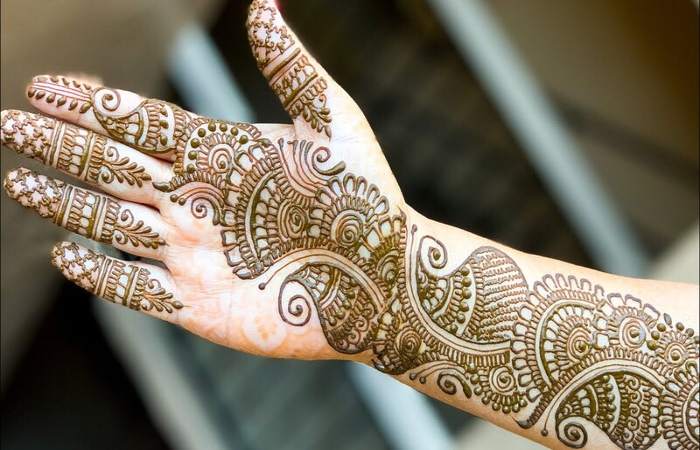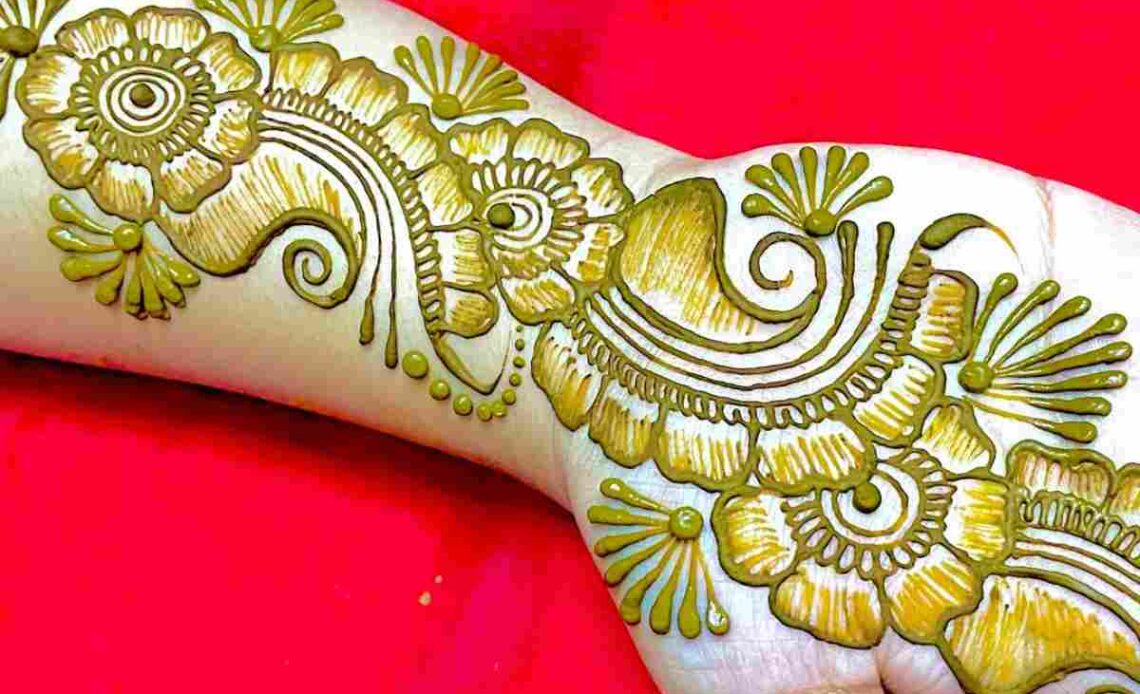Bel Mehndi Design Front Hand – Mehndi/Henna has been one of the oldest forms of art used over thousands of years across different cultures, predominantly within the Indian subcontinent, the Middle East, and parts of North Africa. The intricate designs made with the help of henna on human skin are not only to be used as body art but have auspicious and symbolic values as well. Among the most common Mehndi designs, this present one is elegant, simple, and time-consuming. The bel mehndi design on the front hand offers a visual appeal that lets the beauty of the hand shine through.
What is Bel Mehndi Design?
The term “bel” means a vine or creeper. This creeper is often depicted as a motif in Mehndi’s artwork. The bel mehndi design features the same spiral, vine-like patterns that resemble a plant’s growth and may include leaves and flowers delicately placed along the design. Patterns often intertwine and flow in a manner that mimics a plant’s natural, organic movement in a plant as it grows, creating a very intricate yet fluid aesthetic that appears stunning on both hands and feet.

The bel mehndi design can be straightforward with minimalistic vines or more elaborative patterns with detailed floral motifs, dots, and swirls. This design varies individually, with someone needing a more traditional look or modern fusion.
Significance of Bel Mehndi Design
Mehndi patterns of “bel” symbolize growth, prosperity, and beauty because “bel” is used for vines, which symbolize positive energy and new ideas. Mehndi in traditional rituals, especially Indian weddings, is applied to the bride’s hands and feet, representing love, joy, and good fortune. Also, the mildness of the motif of the bel vine is supposed to reflect fertility and harmony in love life.
Mehndi is also regarded as bringing good fortune and positive energy away. Applying Mehndi to the front hand, especially in intricate designs like the bel pattern, has proved an important constituent of cultural celebrations, adding beauty and symbolism to festive occasions.
Designing Bel Mehndi for the Front Hand
When it comes to applying the front hand with a bel mehndi design, the canvas of the hand offers great opportunity for creativity and expression. The front hand is quite often preferred because of its allowance for larger and more detailed patterns, making it more vivid and effective.
Below are some significant points in designing Bel Mehndi in the front hand.
Flowing Vines
A distinguishing element of a traditional bel Mehndi design is its flowing vine-like structure. Vines may run from the wrist down the fingers, spiraling and winding around the hand. Vines vary in style from bold and thick lines to slender, delicate strokes. The vine’s flow can also be molded according to the hand and finger’s shape, creating a smooth and elegant design.
Floral Accents
Most Mehndi designs usually feature small flowers and buds. These flowers can be simple or enlarged with a detailed but more intricate blossom. Floral elements give a feminine look and balance the design simultaneously, making the artwork harmonious and complete.
Dotwork and Detailing
Dotwork is also extensively added to the bel mehndi to give it texture and depth. The smallest dots are often applied on the vines or within the flower petals, causing an intricate impression with an elaborate look. The detailing makes it look more aesthetically pleasing, prosperous, and sophisticated.
Incorporating Geometric Shapes
While the bel design is more organic, it may present geometrical shapes like triangles, diamonds, or circles in modern fashion. Through these shapes with the swirling vines, there can be a good contrast between traditional and contemporary styles.
Finger Decoration
The fingers are a significant part of Mehndi’s design. Often, the design extends to the fingers in delicate patterns. Delicate and simple, elongated vines flow down the fingers, or intricate floral motifs decorate the knuckles. Fingers may be enhanced with dots, lines, and small leaf patterns for an overall appeal.
Perfect Occasions for Bel Mehndi Design
These designs are versatile as they can be worn on different occasions, from weddings to festivals. Some special occasions where this design is applied include the following:
- Weddings: Brides typically prefer such bel mehndi designs because of the intricacy and tradition attached to the design. It will complement the overall elegance of the wedding attire, bringing grace and the look of decorations to the hands.
- Festivals: On festivals such as Eid, Diwali, and Karva Chauth, women apply mehndi to celebrate. In terms of design, the bel is used because it is not too heavy but is highly beautiful and has a stunning, intricate design.
- Engagements or Anniversaries: Love and commitment are the meanings of the mehndi bel so well presented to engagements or anniversaries.
Conclusion
The Bel Mehndi design for the front hand is a perfect blend of elegance, tradition, and artistry. Its natural, flowing vine-like patterns and delicate floral and geometric elements make it a favorite choice for women seeking a timeless, beautiful design for special occasions. Whether for a wedding, festival, or personal celebration, bel mehndi adds a touch of grace and sophistication to the hands, leaving a lasting impression.


